
Performance Analysis
While our GPU tests are far from exhaustive, they do illustrate the benefits and drawbacks of SLI rather succinctly. Fallout 4, a DirectX 11 title, demonstrates solid scaling: compared to an overclocked GTX 1080, this pair of overclocked cards delivers over 1.7x performance on average at 1440p and almost 1.9x performance at 4K. Truth is, if you're determined to play games at 4K ultra right now, this is the sort of GPU setup you need – a single GTX 1080 is only able to deliver a minimum of 27fps in this latter test, but this rises to 53fps here.In the DirectX 12 title, Total War: Warhammer, however, the cards run into some issues. At 1440p, the minimum frame rate is the same as you'd get on a single GTX 1070, and even the average is only a little higher. That said, at 4K, performance over a single overclocked GTX 1080 does increase, although not by as much as in Fallout 4 – 56 percent on average. Clearly, scaling is possible here, but there's some sort of limitation at lower reoslutions – GPU-Z showed that neither GPU was being pushed very hard. This certainly won't be the case for every DirectX 12 title, but it does illustrate the general issue with SLI in that it is highly reliant on software and very unpredictable – with just four tests, we've seen performance that's worse than a single card but also close to double the performance of one. None of this is Fierce PC's concern, of course, but it's important to know what you're getting into bed with when going the multi-GPU route.
The PCMark 8 results are disappointing to say the least, especially with regards to video editing, where the system is seemingly slower than the CCL Elite Strix 100, which uses an Intel Core i3 CPU. We observed that the CPU simply wasn't boosting to its overclocked freqeuency with any regularity, and even in the photo editing test the PC only manages a mid-table result despite having six of the fastest cores currently available. These results are even more bewildering when you consider the rendering benchmarks Terragen 3 and Cinebench. In these, the sextet of 4.2GHz cores allow the Dragon Ripper to beat all the other systems we've seen so far. In both instances, the 10-core Core i7-6950X is understandably quicker, as is a Core i7-5930K when overclocked to a higher level, but there's no denying that six Broadwell cores are a bonus if you're frequently rendering with CPU-limited programs.
Still though, those PCMark 8 results seemed off. We delved further and found that disabling EIST (Enhanced Intel SpeedStep Technology) in the BIOS – a common tactic amongst overclockers seeking maximum performance – saw the results rise considerably, and we dropped the video editing time from 142.4 seconds to 115.3 seconds. Idle system power consumption remained unchanged, but doing this does mean that all clock states between idle and loaded are disabled. This means that, while idle power consumption is unchanged, power consumption on average (and thermal output) will be higher as any time the CPU needs to boost it will go immediately to 4.2GHz. In reality, this is a beastly system that is never going to be 'slow', and when the cores are truly needed at full power they will kick in properly (as the rendering results show). Still, it does seem as if the motherboard could be better at managing the CPU boosting.
Both the idle and load power consumption figures are relatively high, but there aren't really any competing systems in the charts – this system is running the latest architectures, sure, but there are still six cores, two hefty GPUs, a pump and five fans to keep running at any one time. The load consumption at 690W is within 10 percent of the PSU's maximum rating, which is more than we're used to seeing but still comfortable for it to deal with. Even in extreme gaming situations this power supply is able to keep up.
As mentioned, this motherboard has a PCI-E 2.0 x4 M.2 slot rather than PCI-E 3.0 x4, and this does seem to bottleneck the SSD. It's a drive rated for sequential read/write speeds of 2,200MB/sec and 900MB/sec respectively, but the sequential reads are limited to just under 1,700MB/sec or so. In fairness the real-world impact is minimal, as the PCMark 8 storage traces show, but it still feels a bit gutting to receive a drive that's capped in performance.
The Dragon Ripper passed all of our stability tests, even with the CPU and both GPUs under full load. After stress testing, the secondary GPU (the one that the coolant reaches first) had a delta T of just 31°C, which rose to 38°C for the primary card. The CPU, meanwhile, was kept at a delta T of 59°C – a little on the high side, but still nothing of much concern. Ultimately, you can game on this system all day long, even when it's warm, without worrying about temperatures.
That said, system noise was disappointingly high. The trio of exhaust fans (one rear, two roof) were spinning slowly and quietly throughout testing, but the two fixed to the rear of the front radiator seemed to be going full pelt the entire time, despite being connected to the thermally controlled CPU fan header. It's really a shame to receive a water-cooled system where noise can be considered an issue as a big part of water-cooling is noise reduction. In fairness, this is a system focussed on high performance, but liquid-cooling is about having the best of both worlds, hence the cost. A physical fan controller would have been nice, especially as Gigabyte's motherboard-based fan control system is heavily lacking compared to those of MSI or Asus.
Conclusion
Looking at the retail price of the numerous components here, we came to a rough cost of £3,600 and that was excluding any tubing or fittings. In short, it would be difficult to build a system like this for less than what Fierce PC is offering – a custom water-cooled Broadwell-E system with twin GTX 1080s is never going to qualify as cheap. On top of the raw cost, you also get the system built, overclocked, delivered and supplied with pretty decent warranty terms, and the little additional aesthetic touches are welcome too. There are very few people who truly need a system this powerful, but it has shown itself to be capable of smooth 4K ultra gaming, which is not something that can be said of many PCs. Having a solid price is one thing, but at this level it's really more about sheer quality than value for money, so how does the Dragon Ripper stack up in that regard?There are certainly many positives – for starters, this is simply an awesomely powerful system on nearly every front. Beyond that, the vinyl coating is a neat touch, but it remains to be seen how well Fierce PC is able to utilise it. Otherwise, the motherboard, coolant, sleeved cable set, internal LEDs and Thermaltake Riing fans all successfully contribute to a consistent aesthetic, which is undoubtedly going to be important in the minds of people with £4,000 to spend on a PC. The CPU and GPUs are all nicely overclocked too, and the water-cooling loop is sensibly designed and keeps all important temperatures in check. The build quality is also strong, with good cable routing ensuring that anyone peering in through the window is sure to be jealous.
Still, it's not overly difficult to find fault with the Dragon Ripper. The lack of USB 3.1 is certainly unfortunate, as is the fact that both the SLI GPUs and the M.2 SSD are technically bandwidth limited – in the former case, it's unlikely to ever make a difference, but the sequential read speed of the SSD 950 Pro is clearly capped, which is disappointing in a system this expensive even if it doesn't alter much in real-world tests. The absence of a saved BIOS profile was also disconcerting, and the overclock settings were arguably a bit too power-conservative, which resulted in a few poor results. Some may argue that the PSU is being stretched too close to its limits too, but our biggest criticism, however, is the noise of the front two fans – despite being connected to the CPU fan header, they seem to fun at full speed all of the time and unlike most of our other complaints this does have a clear real-world impact. Nonetheless, it could be changed by the addition of a fan controller, or even by delving into the BIOS settings and having a fiddle, but we do feel that quiet out-of-box performance is important in a custom liquid-cooled PC.
Ultimately, the Dragon Ripper is an exceptionally powerful and a surprisingly good value PC, but it fails to achieve true greatness. With the given options available and for the reasons outlined above, we don't believe that the configuration we have here is the best this rig is capable of. Nevertheless, Fierce PC has a good number of options on its website to remedy this, and there are very few slip-ups in terms of the quality and aesthetics of the build. As such, we're happy to recommend Fierce PC's services but the Dragon Ripper could do with a few tweaks here and there – you can easily get in touch with Fierce PC to discuss this if you're unsure.

MSI MPG Velox 100R Chassis Review
October 14 2021 | 15:04

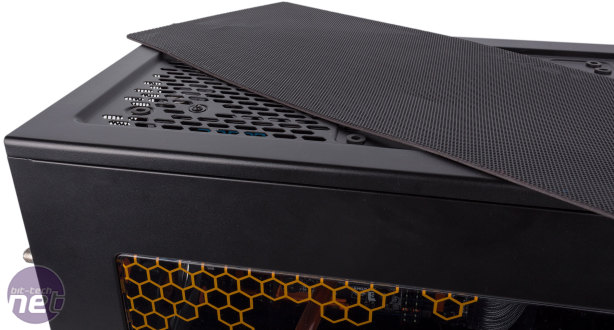
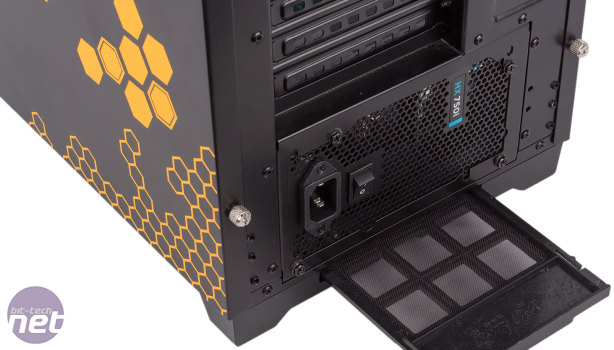
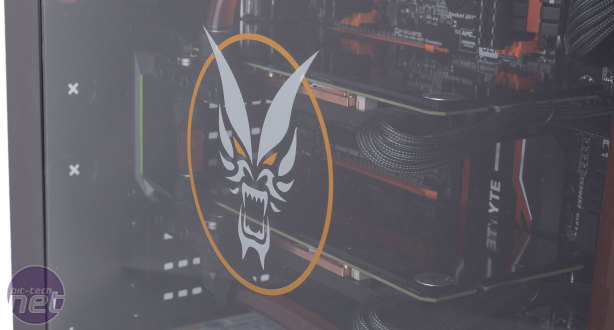
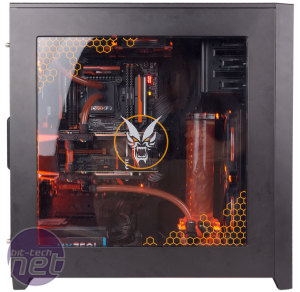
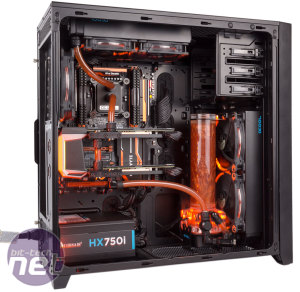








Want to comment? Please log in.